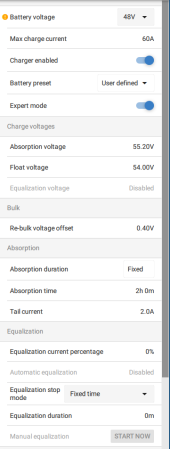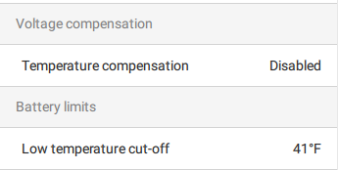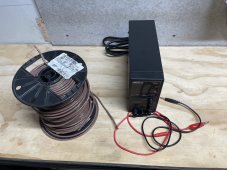Jesshaines
New Member
- Joined
- Mar 29, 2022
- Messages
- 36
Ok, so I'm a relative newb. Living totally off-grid in the desert, full time student with 2 cats (who need to stay cool in the summer). Basically, I have a lot on my plate. When I built my system (16S 280AH) almost a year ago, I didn't top balance based on recommendation of a friend with experience. He said with quality cells, its not necessary....
Well, here I am with one cell consistently running (it usually reaches 3.4 when the rest of the pack is 3.375-3.38). Sooooooo....I'm willing to try anything before I go to the step of disassembling the battery, packing it up to a friend's house an hour away with grid power, doing my best to baby sit the process but I won't be able to be there all the time, trying to manage having only limited power at my house (I have a friend who could share solar power with me, but a much smaller system). you get the picture - not enticing, but I'll do it if necessary.
Things to try before I go there (and looking/hoping for comments feedback suggestions)
I just installed Victron 150V60A SCC. I've only had 2 days to mess with it. So far loving the control. The first day, I set Absorption too high (only 55.0V but my runner started running). Today, I was experimenting with much lower Absorption settings, like 54.2V and then slowing stepping up to 54.6V
It seemed to allow the cells to come closer together - delta went from 0.025V to 0.007-9.
But, at the step from 54.4 to 54.5, the pack seemed to stop coming up to meet the SCC. Or - I could be totally misunderstanding what I was observing. Ran out of sunlight, and I know that at these low voltages, delta isn't all that meaningful. Still - 0.007 is lower than 25....?
1) is this a horrible strategy? Should I continue with this in coming days and see what happens? I know (or think I know) the big difference here is the cells are in series not parallel like in true top balancing.
My other idea to try to avoid dissassembly - manually discharging the cell that's the runner. From what I can gather, this process is very unscientific. basically, connect a load (resistor, light bult) across the high cell and let it discharge some to meet the pack. With only V reading on DVOM as my guide.
Ok, like I mentioned - relative newb here. Forgive me if silly questions.
2) In order to do this, I'm thinking the safest thing is to disconnect the cell from the rest of the pack. Just wondering if anyone can say if that's necessary? What would happen if I tried to discharge the cell while still in series (just trying to understand).
Thanks for reading and thanks in advance for any help
Well, here I am with one cell consistently running (it usually reaches 3.4 when the rest of the pack is 3.375-3.38). Sooooooo....I'm willing to try anything before I go to the step of disassembling the battery, packing it up to a friend's house an hour away with grid power, doing my best to baby sit the process but I won't be able to be there all the time, trying to manage having only limited power at my house (I have a friend who could share solar power with me, but a much smaller system). you get the picture - not enticing, but I'll do it if necessary.
Things to try before I go there (and looking/hoping for comments feedback suggestions)
I just installed Victron 150V60A SCC. I've only had 2 days to mess with it. So far loving the control. The first day, I set Absorption too high (only 55.0V but my runner started running). Today, I was experimenting with much lower Absorption settings, like 54.2V and then slowing stepping up to 54.6V
It seemed to allow the cells to come closer together - delta went from 0.025V to 0.007-9.
But, at the step from 54.4 to 54.5, the pack seemed to stop coming up to meet the SCC. Or - I could be totally misunderstanding what I was observing. Ran out of sunlight, and I know that at these low voltages, delta isn't all that meaningful. Still - 0.007 is lower than 25....?
1) is this a horrible strategy? Should I continue with this in coming days and see what happens? I know (or think I know) the big difference here is the cells are in series not parallel like in true top balancing.
My other idea to try to avoid dissassembly - manually discharging the cell that's the runner. From what I can gather, this process is very unscientific. basically, connect a load (resistor, light bult) across the high cell and let it discharge some to meet the pack. With only V reading on DVOM as my guide.
Ok, like I mentioned - relative newb here. Forgive me if silly questions.
2) In order to do this, I'm thinking the safest thing is to disconnect the cell from the rest of the pack. Just wondering if anyone can say if that's necessary? What would happen if I tried to discharge the cell while still in series (just trying to understand).
Thanks for reading and thanks in advance for any help






